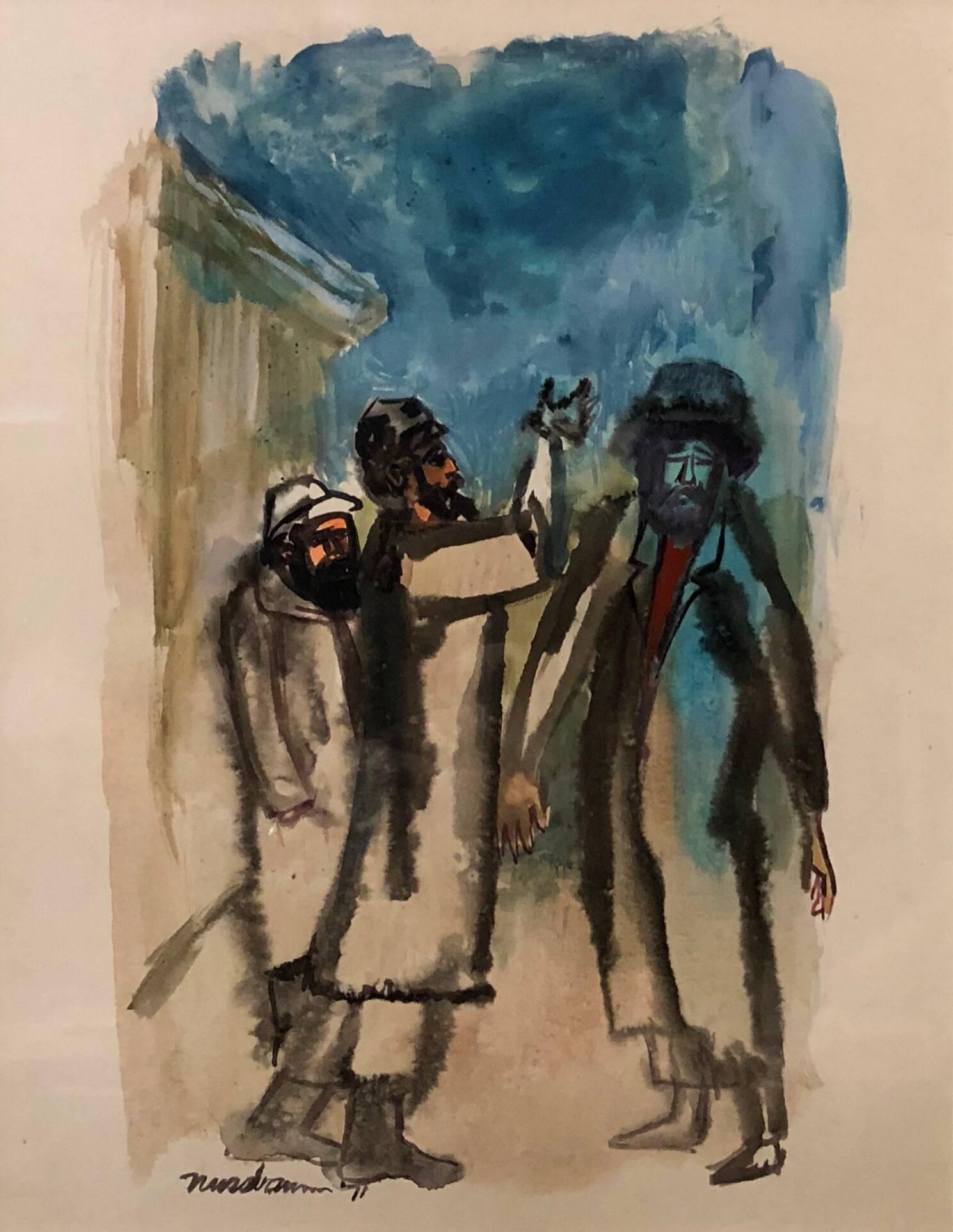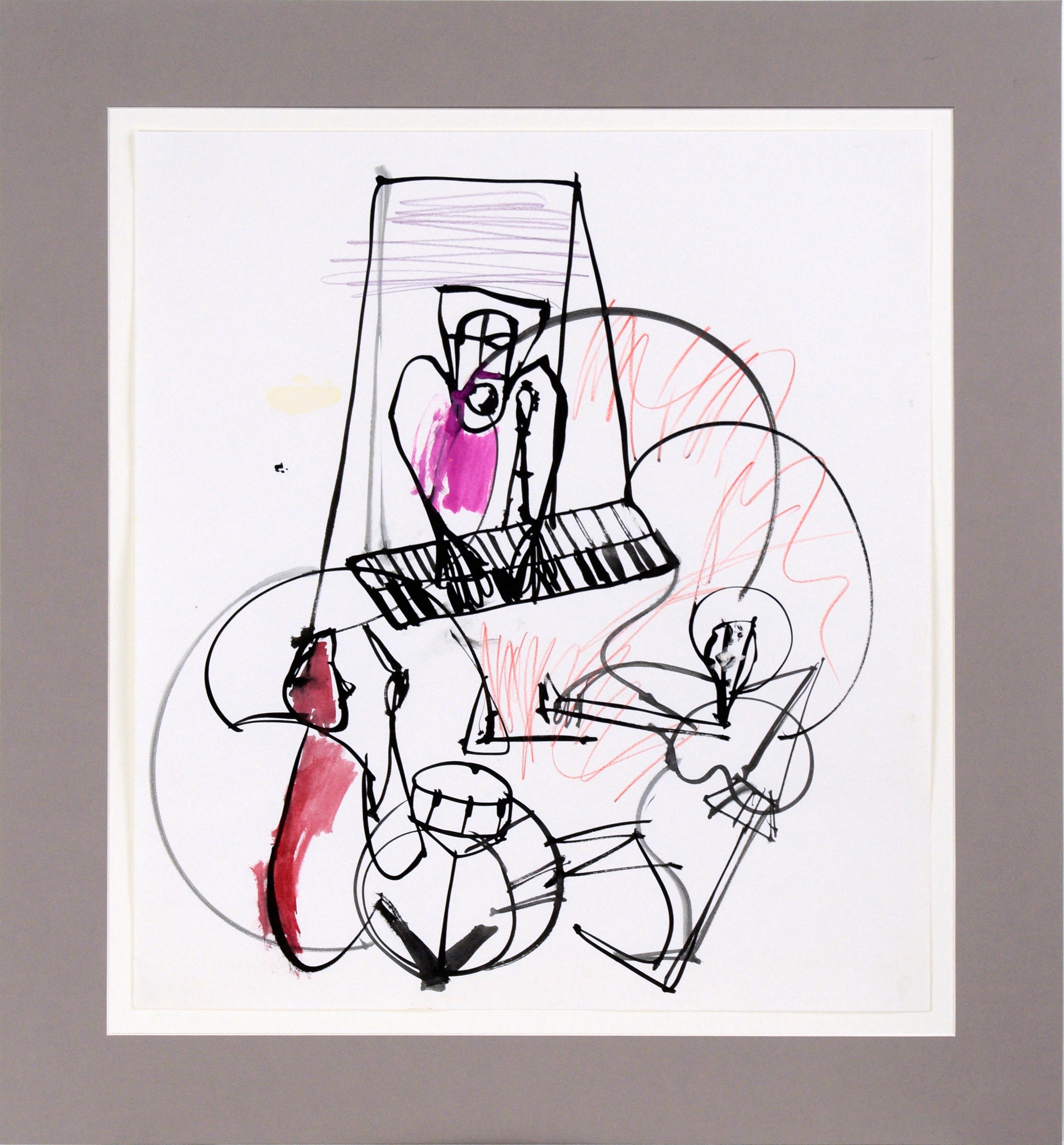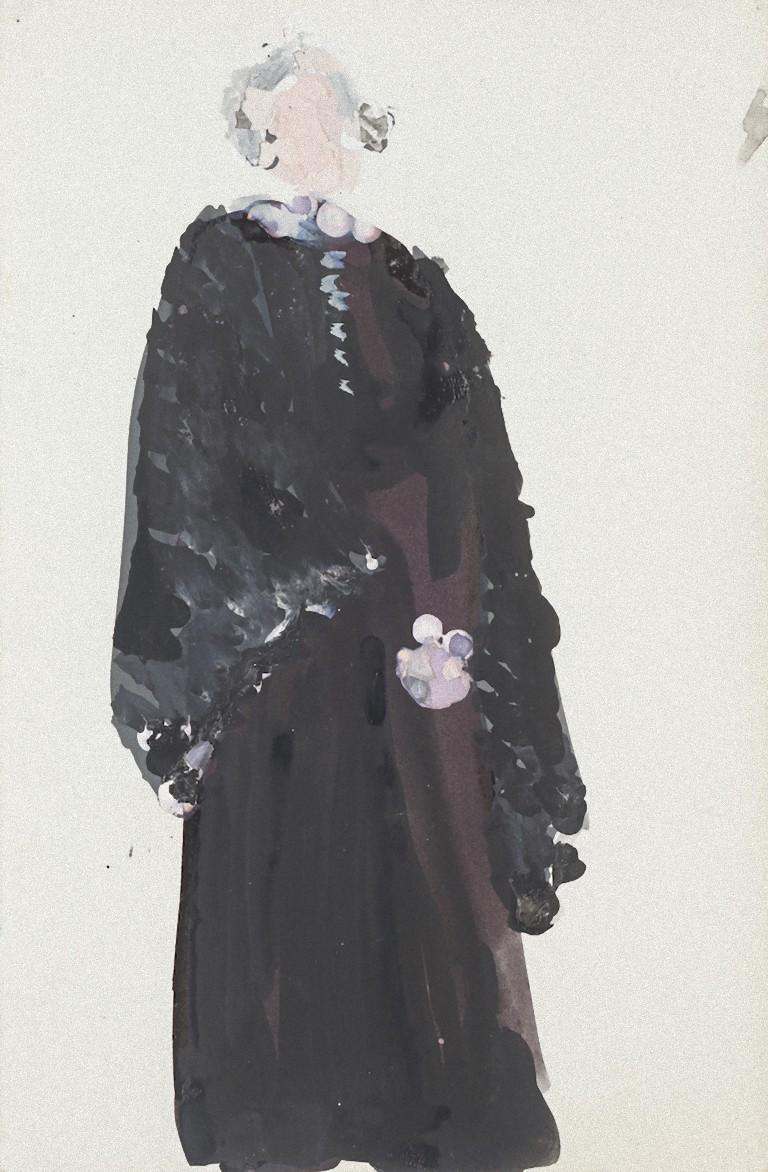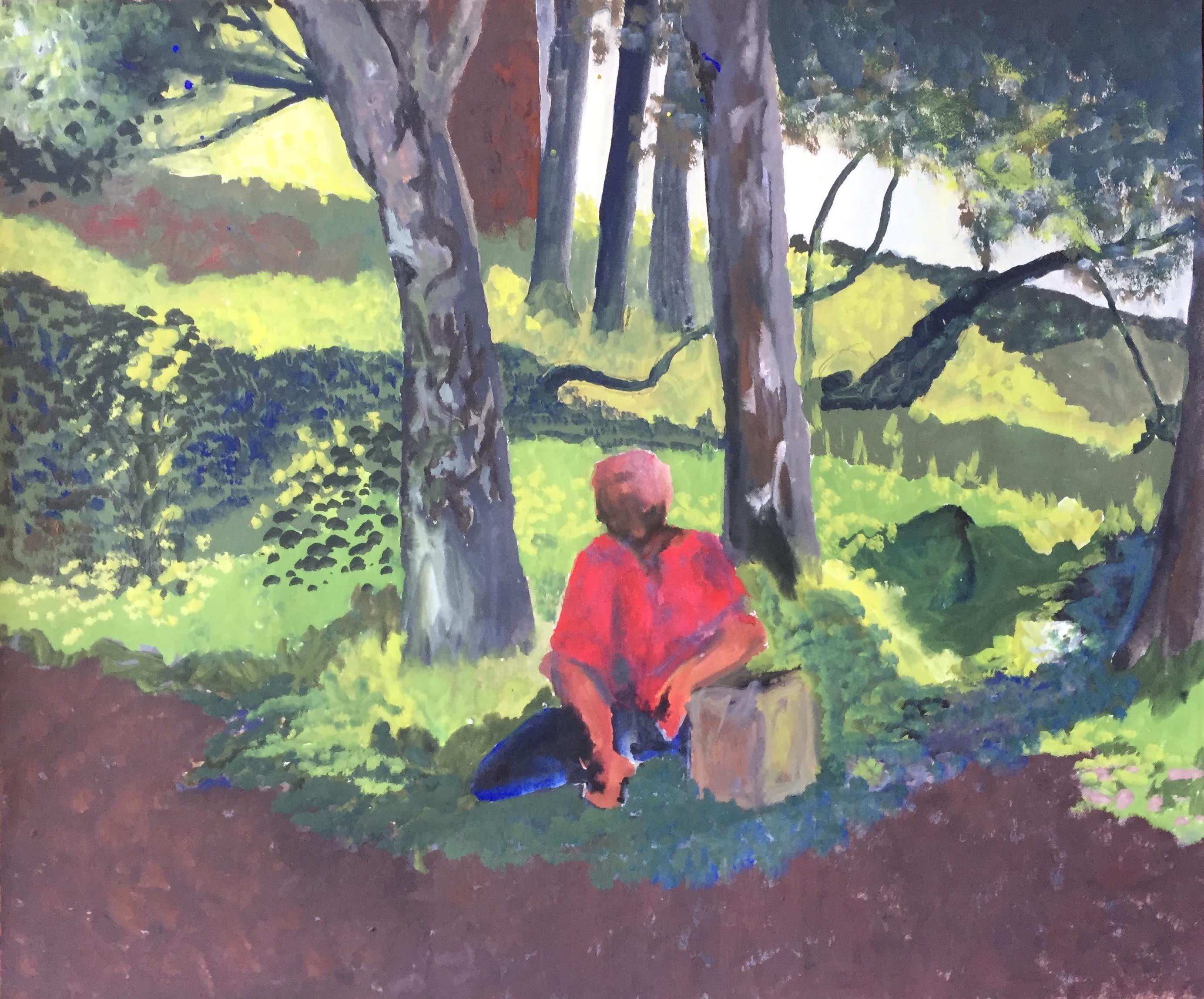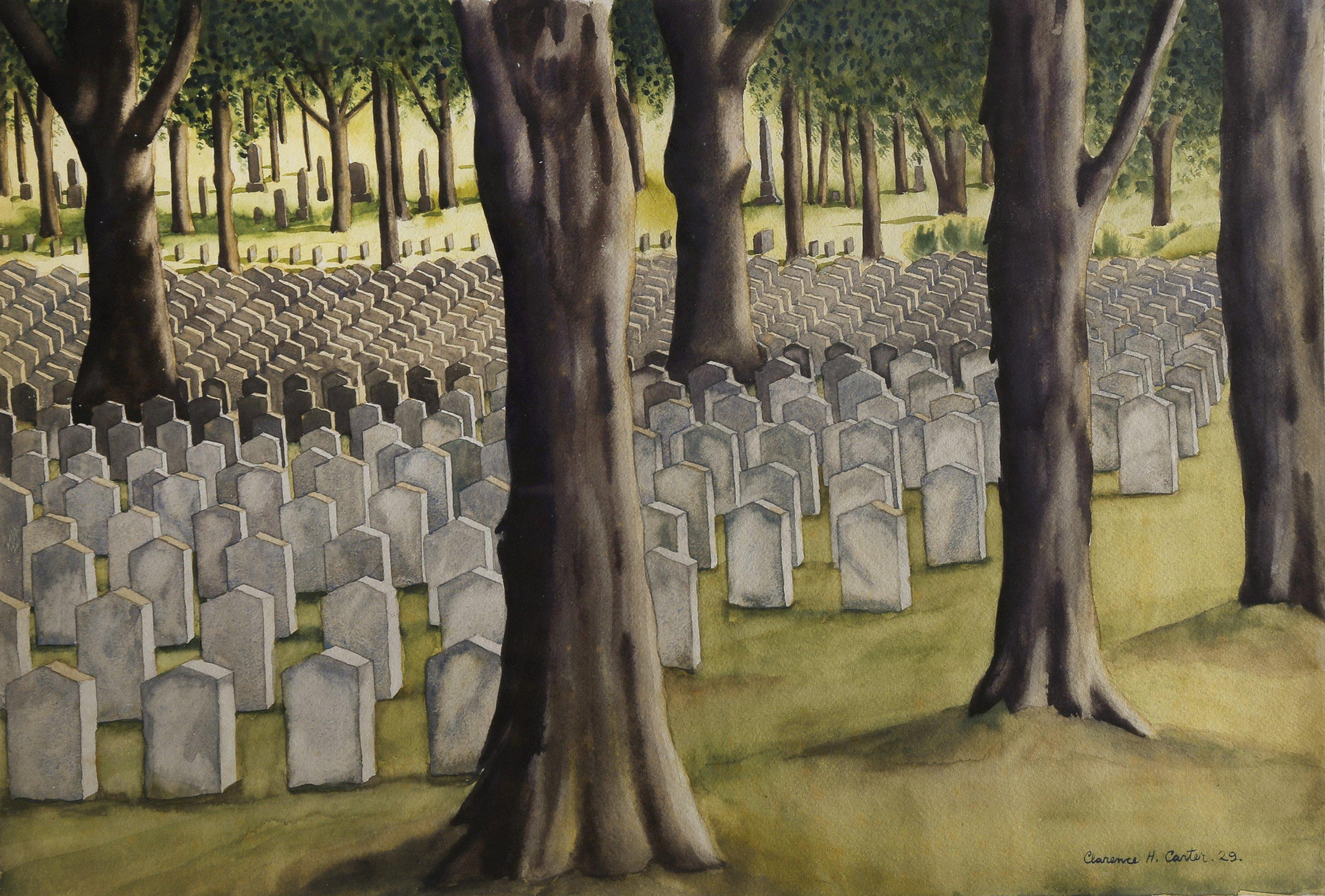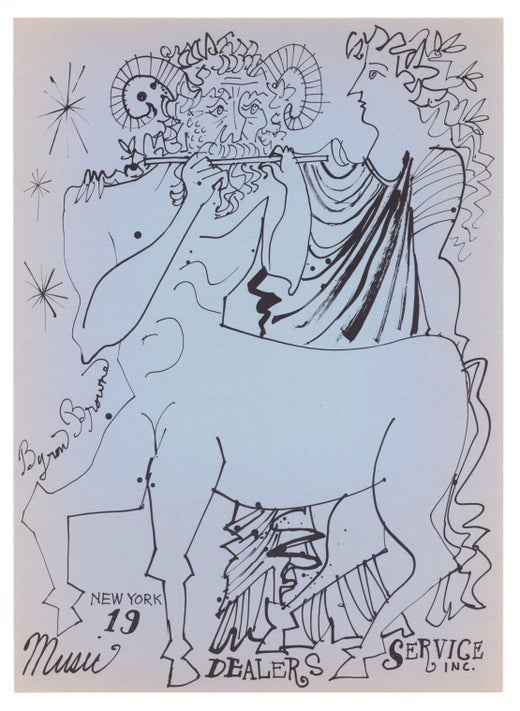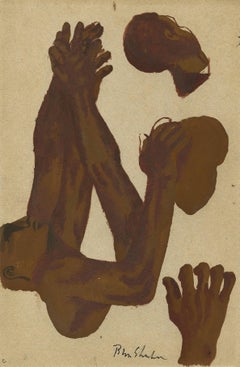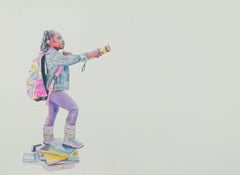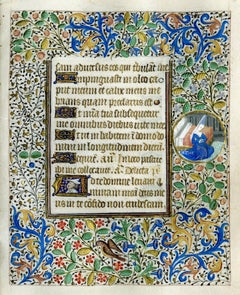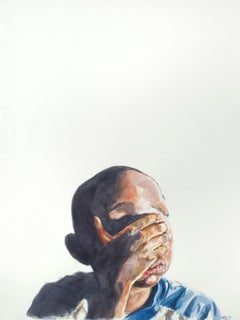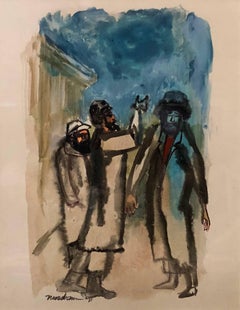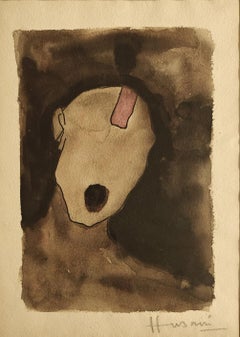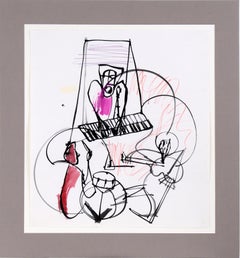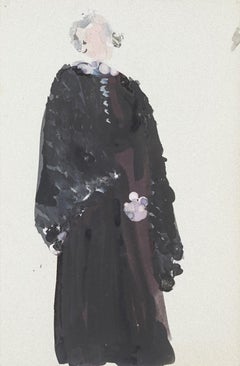Articles similaires à Neoclassical Head in profile
Vous voulez plus d'images ou de vidéos ?
Demander au vendeur plus d'images ou de vidéos
1 sur 10
Byron BrowneNeoclassical Head in profile1950
1950
À propos de cet article
Neoclassical Head in profile
Watercolor and graphite on paper, 1950
Signed and dated lower left in ink (see photo)
Provenance: Washington, D.C. private collection
Condition: Excellent
Colors unfaded, no stains or tears to the large sheet
Sheet size: 27 x 22 1/4 inches
Frame size: 34 x 27 1/2 inches
Archival framing with acid free materials and OP3 Acrylic
Browne was a founding member of Abstract American Artists. In 1949, disillusioned by the current state of Abstract Art, Browne evolved to Neo Classicism having been influenced by Picasso. In 1950 he began teaching at the Art Students League in New York. 1050 is also the year of this painting. There are numerous similar large heads in profile, this being among the best works of the series.
Modernist painter and one of the founders of American Abstract Artists, a New York City organization devoted to exhibiting abstract art. Browne specialized in still life in the style of Synthetic Cubism, influenced by his friends John Graham, Arshile Gorky, and Willem de Kooning.
Joan Stahl American Artists in Photographic Portraits from the Peter A. Juley & Son Collection (Washington, D.C. and Mineola, New York: National Museum of American Art and Dover Publications, Inc., 1995)
Byron Browne was a central figure in many of the artistic and political groups that flourished during the 1930s. He was an early member of the Artists’ Union, a founding member of the American Abstract Artists, and participated in the Artists’ Congress until 1940 when political infighting prompted Browne and others to form the break-away Federation of Modern Painters and Sculptors. Browne’s artistic training followed traditional lines. From 1925 to 1928, he studied at the National Academy of Design, where in his last year he won the prestigious Third Hallgarten Prize for a still-life composition. Yet before finishing his studies, Browne discovered the newly established Gallery of Living Art. There and through his friends John Graham and Arshile Gorky, he became fascinated with Picasso, Braque, Miró, and other modern masters.
The mid 1930s were difficult financially for Browne.(1) His work was exhibited in a number of shows, but sales were few. Relief came when Burgoyne Diller began championing abstraction within the WPA’s mural division. Browne completed abstract works for Studio D at radio station WNYC, the U.S. Passport Office in Rockefeller Center, the Chronic Disease Hospital, the Williamsburg Housing Project, and the 1939 World’s Fair.(2)
Although Browne destroyed his early academic work shortly after leaving the National Academy, he remained steadfast in his commitment to the value of tradition, and especially to the work of Ingres.(3) Browne believed, with his friend Gorky, that every artist has to have tradition. Without tradition art is no good. Having a tradition enables you to tackle new problems with authority, with solid footing.(4)”
Browne’s stylistic excursions took many paths during the 1930s. His WNYC mural reflects the hard-edged Neo-plastic ideas of Diller, although a rougher Expressionism better suited his fascination for the rustic, mythical, and organic. A signer, with Harari and others, of the 1937 Art Front letter, which insisted that abstract art forms “are not separated from life,” Browne admitted nature to his art—whether as an abstracted still life, a fully nonobjective canvas built from colors seen in nature, or in portraits and figure drawings executed with immaculate, Ingres-like finesse.(5) He advocated nature as the foundation for all art and had little use for the spiritual and mystical arguments promoted by Hilla Rebay at the Guggenheim Collection: When I hear the words non-objective, intra-subjective, avant-garde and such trivialities, I run. There is only visible nature, visible to the eye or, visible by mechanical means, the telescope, microscope, etc.”(6)
Increasingly in the 1940s, Browne adopted an energetic, gestural style. Painterly brushstrokes and roughly textured surfaces amplify the primordial undercurrents posed by his symbolic and mythical themes. In 1945, Browne showed with Adolph Gottlieb, William Baziotes, David Hare, Hans Hofmann, Carl Holty, Romare Bearden, and Robert Motherwell at the newly opened Samuel Kootz Gallery. When Kootz suspended business for a year in 1948, Browne began showing at Grand Central Galleries. In 1950, he joined the faculty of the Art Students League, and in 1959 he began teaching advanced painting at New York University.
Courtesy of Smithsonian
- Créateur:Byron Browne (1907-1961, Américain)
- Année de création:1950
- Dimensions:Hauteur : 68,58 cm (27 po)Largeur : 53,98 cm (21,25 po)
- Support:
- Mouvement et style:
- Période:
- État:
- Adresse de la galerie:Fairlawn, OH
- Numéro de référence:Vendeur : FA120221stDibs : LU14016413362
Byron Browne
Byron Browne (1907-1961) est un peintre américain, membre fondateur des American Abstract Artists. Browne est né le 26 juin 1907 à Yonkers, New York. Il a étudié à la National Academy of Design de 1925 à 1928. Il était membre de l'Union des artistes. En 1936, il est l'un des membres fondateurs des American Abstract Artists. Il a réalisé des peintures murales sous les auspices de la Works Progress Administration pour l'hôpital des maladies chroniques et l'exposition universelle de New York de 1939. En 1940, il a épousé une autre artiste, Rosalind Bengelsdorf. Il a enseigné la peinture à l'Art Students League de New York de 1948 à 1959, puis à l'université de New York. Il est décédé le 25 décembre 1961 à New York. Les œuvres de Browne font partie des collections de l'Art Institute of Chicago[5], du Museum of Modern Art, du Philadelphia Museum of Art, du Smithsonian American Art Museum et du Whitney Museum of American Art.
À propos du vendeur
5,0
Vendeur reconnu
Ces vendeurs prestigieux sont des leaders du secteur. Ils représentent le summum en matière de qualité et de design.
Vendeur Or
Vendeurs premium dont la note est supérieure à 4,3 et le délai de réponse de 24 heures maximum
Établi en 1978
Vendeur 1stDibs depuis 2013
788 ventes sur 1stDibs
Temps de réponse habituel : <1 heure
Associations
International Fine Print Dealers Association
- ExpéditionRecherche du devis...Expédition depuis : Fairlawn, OH
- Politique des retours
Certaines parties de cette page ont été traduites automatiquement. 1stDibs ne garantit pas l'exactitude des traductions. L'anglais est la langue par défaut de ce site web.
Garantie d'authenticité
Bien qu'il soit peu probable que la situation se présente, dans le cas où vous rencontreriez un problème d'authenticité d'un article, contactez-nous dans un délai d'un an pour obtenir un remboursement intégral. DétailsGarantie de remboursement
Si votre article n'est pas conforme à la description, est endommagé pendant le transport ou ne vous est pas livré, contactez-nous sous 7 jours pour obtenir un remboursement intégral. DétailsAnnulation sous 24 heures
Vous disposez d'un délai de 24 heures pour annuler votre achat sans motif.Des vendeurs professionnels agréés
Nos vendeurs de renommée mondiale doivent respecter des normes strictes en matière de service et de qualité, afin de préserver l'intégrité de nos fiches produit.Garantie d'alignement des prix
Si vous constatez qu'un autre vendeur a mis en vente le même article à un prix inférieur sur un autre site, nous nous alignerons sur ce prix.Livraison en toute confiance à l'international
Notre réseau de transporteurs de premier ordre propose des options d'expédition spécialisées dans le monde entier, y compris des livraisons personnalisées.Plus d'articles de ce vendeur
Tout afficherJoueur de basket-ball
Par Ben Shahn
Joueur de basket-ball
Gouache sur papier cartonné, c. 1940
Signé par l'artiste à l'encre en bas au centre.
Étude pour la fresque murale du Social Security Building (aujourd'hui Feder...
Catégorie
années 1940, Modernisme américain, Peintures - Figuratif
Matériaux
Gouache
À la recherche de nouveaux départs (Les peintures 1)
Par Darius Steward
À la recherche de nouveaux départs (Les tableaux 1)
Aquarelle sur papier épais Arches, 2021
Signé avec les initiales de l'artiste dans l'ombre des livres (voir photo)
Signé, titré et...
Catégorie
années 2010, Réalisme, Peintures - Figuratif
Matériaux
Aquarelle
e rondelle représentant Sainte-Catherine
Inconnu Art et atelier français, milieu du XVe siècle
Rondelle représentant Sainte Catherine ( ?)
Gouache, encre, lavis d'or et brunissage d'or sur vellum
Folio du livre d'heures at...
Catégorie
15e siècle et avant, Maîtres anciens, Peintures - Figuratif
Matériaux
Gouache, Pigment
Sans titre
Par Darius Steward
Signé avec les initiales de l'artiste en bas à droite
Aquarelle sur papier épais Twinrocker
Catégorie
années 2010, Contemporain, Peintures - Figuratif
Matériaux
Aquarelle
4 500 $US
Oeils larges
Par Darius Steward
Signé avec les initiales de l'artiste en bas à droite
Darius Steward s'impose comme un maître de l'aquarelle et des grandes fresques publiques. En 2018, Steward a créé deux grandes...
Catégorie
années 2010, Contemporain, Dessins et aquarelles - Portrait
Matériaux
Aquarelle
6 500 $US
The Signs Year 2020 Part One.
Par Darius Steward
The Signs Year 2020 Part One.
Signé avec les initiales de l'artiste en bas à droite.
Signé avec le cachet à sec de l'artiste "Yummy" dans le coin inférieur droit.
Aquarelle sur papie...
Catégorie
années 2010, Contemporain, Peintures - Figuratif
Matériaux
Aquarelle
Suggestions
Peinture moderniste américaine judaïque représentant des lapins en conversation
Par Ervin B. Nussbaum
Dans cette peinture, Nussbaum représente Rabbi en conversation animée à l'extérieur de la synagogue, à la manière d'une esquisse, sans s'attarder sur des détails spécifiques. Les cou...
Catégorie
années 1970, Moderne, Peintures - Figuratif
Matériaux
Papier, Aquarelle, Gouache
Sans titre, aquarelle sur papier de l'artiste moderne M.F Husain « En stock »
Par M.F. Husain
A&M. Husain - Sans titre
14 x 10 pouces (format non encadré)
Aquarelle sur papier
(encadré et livré)
MF Husain, artiste de renommée mondiale, est célèbre pour diverses séries, mais ...
Catégorie
années 1990, Moderne, Plus d'Art
Matériaux
Papier, Aquarelle
Trio de jazz expressionniste abstrait à l'encre et aquarelle sur papier
Par Michael William Eggleston
Interprétation dynamique et expressive d'un trio de jazz par l'artiste de San Francisco Michael William Eggleston (américain, 20e siècle). Cette pièce présente trois figures abstrait...
Catégorie
Fin du 20e siècle, Moderne, Peintures - Figuratif
Matériaux
Papier, Encre de Chine, Aquarelle, Crayon de couleur
Costume - Techniques mixtes originales sur papier d'Alkis Matheos - Milieu du XXe siècle
Par Alkis Matheos
Costume est une peinture originale en techniques mixtes, tempera et aquarelle sur papier, réalisée par l'artiste franco-grec Alkis Matheos.
Très bonnes conditions.
Signé par le ca...
Catégorie
Milieu du XXe siècle, Moderne, Peintures - Figuratif
Matériaux
Technique mixte, Tempera, Aquarelle
Peinture de paysage du milieu du siècle Art Institute of SF vert, rouge, bleu
Par Gloria Dudfield
Gloria Dudfield (1922-2015)
Sans titre
c.1960s
Gouache sur papier
18 "x15" sans cadre
Non signé
Elle est issue d'un portfolio de ses travaux dans la région de la baie de San Francis...
Catégorie
Milieu du XXe siècle, Moderne, Peintures - Figuratif
Matériaux
Papier, Gouache
Cimetire des soldats confdrs, Camp Chase, Columbus, Ohio aquarelle
Par Clarence Holbrook Carter
Clarence Holbrook Carter (Américain, 1904-2000)
Cimetière des soldats confédérés, Camp Chase, Columbus, Ohio, 1929
Aquarelle sur papier
Signé et daté en bas à droite
14 x 20 pouces
...
Catégorie
années 1920, Modernisme américain, Dessins et aquarelles - Figuratif
Matériaux
Aquarelle
